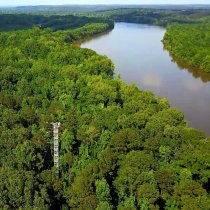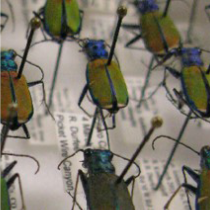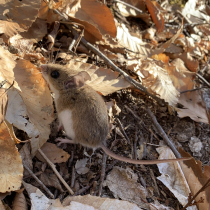Case Study
NEON Data Yield Insights into Links Between Climate, Traits and Species Richness
April 13, 2018
What can the size of a deer mouse tell you about the number of species present in its environment? A lot, as it turns out.
When a team of ecologists wanted to study the links between species traits and the overall diversity of species in an ecosystem, they turned to data from the NEON project to look for clues. In a study recently published in Ecography, researchers used data from the NEON Terrestrial Observational Sampling (TOS) system to demonstrate that body size overlap between species of rodents is highly correlated to species richness, or the total number of species present in the environment.
Answering Fundamental Questions About Climate, Traits and Diversity
Led by Quentin D. Read, an ecologist at Michigan State University, the team wanted to answer fundamental questions about the mechanisms that drive species richness. Temperature is recognized as one of the major factors influencing species richness, with a higher diversity of species in warmer climates and fewer species present in colder climates. Looking at the interrelationships among temperature, species richness, and the overlap of traits between species could provide important insights into the mechanisms behind this relationship.
While these questions could be explored using any number of plant or animal taxa, the researchers ultimately decided to focus on rodents using NEON small mammal data (DP1.10072). Using body size (weight) and species data, they determined that species in colder climates had more overlap in body size, while warmer climates supported rodents with wider variations in body size. These data support the theory that colder climates reduce diversity of both traits and species, and warmer climates encourage a wider diversity of traits and promote specialization into different niches.
The study is an example of the macro-ecological questions that can be asked and answered using data from NEON field sites. To look at how traits, species richness and climate interrelate, researchers needed rich and comparable data that represented different climate zones and biomes. Collecting the data from scratch for this kind of study would be costly and time consuming for an individual researcher or research team. The NEON project provides an infrastructure for systematic collection of data that can be compared between sites and across time. Over the planned 30-year life of the observatory, these data will enable ecologists to discover patterns on a much larger geographic and temporal scale than has been possible in the past.
Leveraging NEON Data and Battelle Expertise
The researchers leading the study first came together at an Ecological Society of America event, where they also met Kate Thibault, the Project Scientist and small mammal ecologist for the NEON project. When the National Science Foundation subsequently funded the project, the team reached out to Kate. She was able to provide important subject matter expertise and guidance to the team, which did not include any small mammal specialists. She helped them decide which species they should use for the study, determine what data were available, and interpret the results.
The study was funded through NSF's MacroSystems Biology and Early NEON Science program, which supports interdisciplinary, systems-oriented research on biosphere processes and their complex interactions with climate, land use, and invasive species at regional to continental scales. NSF is accepting proposals for additional research projects under this grant though October 15, 2018.
Battelle scientists working on the NEON project bring together expertise representing many different ecological specialties, including botany, insect ecology, pathogens, biogeochemistry and micrometeorology. These scientists serve as an important resource for researchers wishing to make use of NEON data.
As more data become available from NEON field sites, researchers will be able to use the data to tackle a wide range of macro-ecological questions. NEON data are freely available to the science community from the NEON Data Portal.



